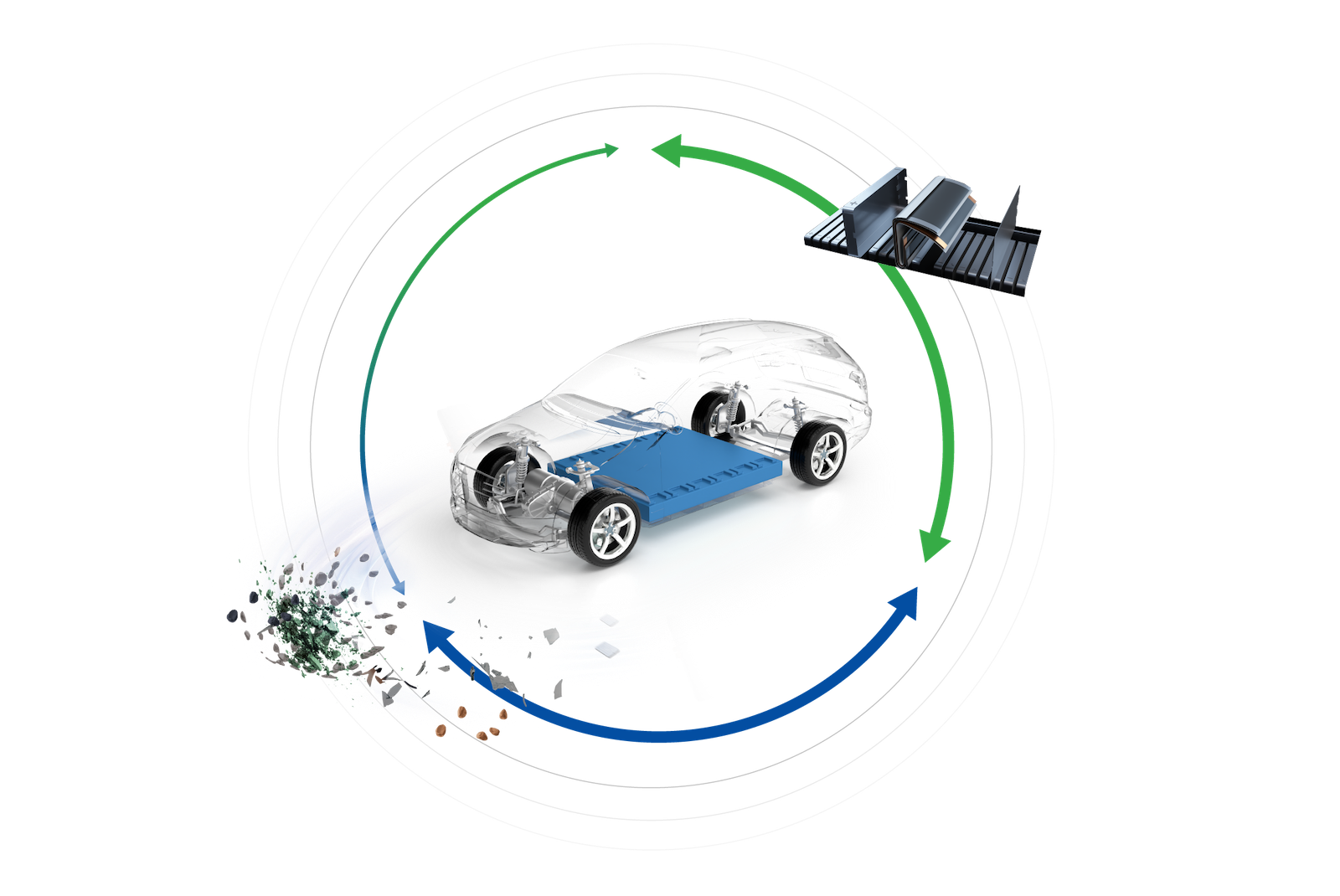The surge in electric mobility is both a huge opportunity and an enormous challenge for the mobility ecosystem. Nowhere is this truer than in the battery value chain. Demand for batteries will grow exponentially, but – on the flip side of the coin – it will be a struggle to source the large amounts of critical raw materials needed like nickel, cobalt and lithium. For the recycling industry, the business will intensify too: over the next decade, increasing numbers of Li-ion batteries from electric vehicles will reach their end-of-life, and significant amounts of production scrap from cell and battery cell manufacturing will be generated.
How well we will master the electrification challenge also depends on whether we can enable an efficient circular material model, i.e. whether we can innovate and industrialise sustainable battery recycling processes and industrial capabilities. The recycling of production scrap and end-of-life batteries extracts valuable metals such as nickel, cobalt and lithium. They can be used again as building blocks for new cathode materials and reduce the need for adding “primary” critical raw materials extracted from mine concentrates.
Frontrunning in battery recycling
Europe is a cradle for the development of sustainable and efficient technologies. Based on Umicore’s extensive, pioneering experience of recycling precious metals from very complex materials including electronic waste, we have developed a unique battery recycling technology.
Umicore was an industry frontrunner with its investment in 2010 of an industrial demo installation (initial 7000 tonnes material input per year capacity) at its recycling plant in Hoboken near Antwerp, Belgium.
The technology implemented at Umicore combines a high-temperature treatment (pyrometallurgy) which melts the recyclables in a first process step, followed by a refining process step (hydrometallurgy) which extracts the valuable metals and brings them back in their pure forms so they can be used again for the manufacturing of new cathode materials.
Initial experimental work goes back to the early 2000’s when Umicore research teams were seeking demonstration of existing metallurgical competences on other feedstocks. As the number of Li-ion portable batteries was growing fast at that time especially in laptops, mobile phones and tablets, the aim was to recover first and foremost valuable metals like cobalt and lithium. This work resulted in building an industrial demonstration plant for recycling of batteries without the need for elaborated pre-treatment like discharging or dismantling.
Umicore received the European Business Award for the Environment (EBAE) in the ‘Process’ category in 2012. The majority of the innovation actions was funded by Umicore with some research grants achieved from the Flemish Government (Research & Innovation).

Technological success is not enough.
In spite of this technological head-start on battery recycling technology, it has proven to be a challenging business environment. This is largely due to input shortages. The collection of end-of-life rechargeable batteries from electronic devices has not been successful, whether in Europe or globally, limiting the amount of materials available for recycling. Well-designed and enforceable regulation is needed to drive the collection of end-of-life rechargeable batteries from the automotive sector. Regulatory measures would help in guiding production waste and end-of-life materials to find their way to recycling facilities.
Even for a frontrunner, there is no static solution for high quality battery recycling. Since the design and composition of rechargeable batteries evolve, continued innovation is needed in recycling as well. It is here that another disconnect between the different parts of the value chain becomes painful: Innovation of batteries does not sufficiently incorporate eco-design principles and supply-chain thinking. Yet this is needed to make batteries really fit for a cost-efficient recycling – and it would allow the recycling industry to focus innovation efforts on further progress rather than on problem-fixing due to ever-changing design issues. Instead, today innovations in battery pack and cell design are solely focused on the first-use needs like the technical or safety performance of the battery, and too little on their suitability for dismantling and end-of-life recycling. Regulation can surely help shape the conditions to improve recyclability of the end-of-life batteries.
In short – when looking at innovation in a circular economy context – the whole value chain must be considered from cradle-to-grave in order to achieve real circularity that keeps valuable raw materials in the loop as long as possible.
Holistic policies set a sound foundation for innovation
Not only in the design of rechargeable batteries but also in the evaluation of battery recycling technologies, a holistic view is of key importance.
What is needed is a life cycle assessment approach. The correct comparison of different technologies from cradle-to-grave is key to understanding our choices and deciding what we need to improve via innovation. For instance, if the priority is to achieve the lowest impact on Greenhouse Gas emissions, a lifecycle assessment would point us to the right decisions and policies that design the reference framework for measuring such life cycle impacts should be rigorously implemented.
What does this mean for innovation more generally? In a circular ecosystem, if each part on the value chain operates and pursues innovation in isolation, this leads to suboptimal and conflicting outcomes. What we need is collaboration and a shared compass for innovation. For such a shared compass we need coherent political goals that set the direction of the various layers of regulation and supposedly ‘small & and technical’ details. Those ‘small bits’ play a big role in determining which innovation ultimately has a business case.

